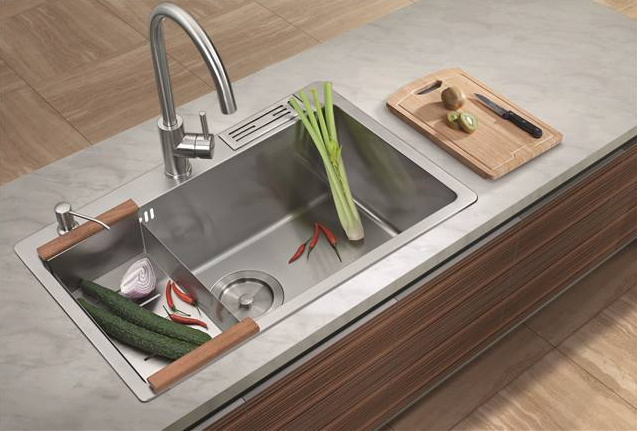Stainless steel sinks are commonly used items in families, bringing convenience to life. Although stainless steel has a strong rust resistance, if not properly maintained, stainless steel sinks can also rust. Therefore, we must pay attention to cleaning and maintenance. Next, Bunker Kitchen will introduce the maintenance methods of stainless steel sinks.
Causes of Floating Embroidery in Stainless Steel Sinks
When decorating the kitchen, welding debris, cement, oil stains, etc. remain on the surface of the sink. Failure to clean them in a timely manner may cause rust and mildew; Residues of chemicals, cleaning agents, paint, sauce, oil, etc. in the sink can cause mold to adhere to the surface of the sink over time.
Daily maintenance techniques for stainless steel sinks
1. Try to avoid sharp and hard utensils such as knives, forks, and cooking utensils hitting the sink to prevent scratching, scratching, or bumping the appearance of the sink.
2. Do not place lemons, sauces, pickles, mustard, or other salty or corrosive foods in the tank or on the panel for a long time to prevent them from corroding the tank.
3. Do not contact hard or rusty objects with water for a long time, and do not use a stainless steel sink as a cutting board
Stain treatment should be scientific
1. When cleaning the sink, it is recommended to use neutral cleaning agents, such as toothpaste or five cleaning powders, and minimize the use of cleaning products with strong acid sulfur, hydrochloric acid, and chlorine components, such as bleach.
2. To protect the rust prevention layer on the stainless steel surface of the sink, use a soft tool such as a sponge or cotton cloth to clean the sink. Do not use a steel ball to scrub the sink to avoid leaving scratches and embroideries on its surface
3. If there are mineral deposits inside the sink, you can use a low concentration vinegar solution to remove them, and finally completely clean them with water.
Post time: Mar-23-2023
